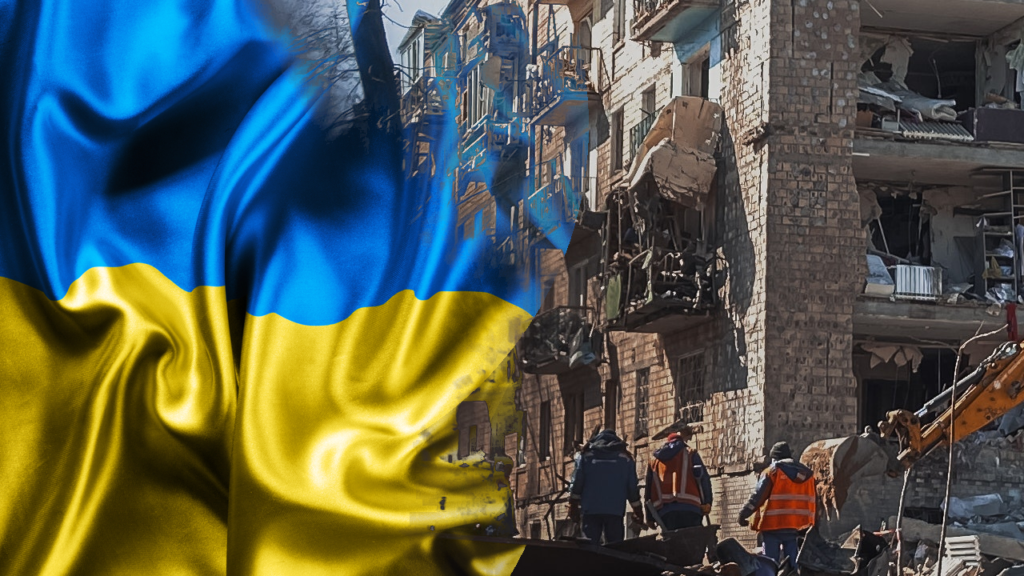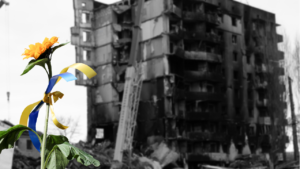As the war in Ukraine continues to rage, it’s not too early to think about how the nation will be reconstructed when rebuilding becomes a possibility. Megan Greene, a Senior Fellow at Harvard Kennedy School, Global Chief Economist at Kroll Institute, and the Dame Deanne Senior Fellow in International Economics at Chatham House, explains, “What is clear is Ukraine will need a lot of financial help when the fighting stops. Now is the time for major donors to put plans and procedures in place to provide it. The potential geopolitical cost of failure is high.”[1] I believe she is correct. In a previous article, I noted, “Supporters of democracy will have their commitment and their patience tested as the Long War continues. Even if the conflict ended tomorrow, the task of reconstructing the country is going to be immense. Enterra Solutions® is determined to help in that effort.”[2]
Ukrainian Reconstruction Will Be Complex
In that article, I also wrote, “I’m hoping the world steps up in the aftermath of the Ukraine conflict in the same way America stepped up with the Marshall Plan following the Second World War. The Marshall Plan was named for Secretary of State George Marshall, who, in 1947, proposed that America provide economic assistance to restore the war-torn economic infrastructure of Europe.” Greene points out, however, “Rebuilding Ukraine will be more complex than the US-financed project for Europe’s reconstruction after the second world war. The Marshall Plan involved one donor for 16 recipients. Postwar Ukraine will be the other way round, with one recipient and at least 16 donors, including individual countries, development institutions, international organizations, private sector actors and, possibly, seized Russian assets and reparations.”
Such an effort will require an overarching approach, similar to a concept I call Development-in-a-Box™ (DIB). The centerpiece of the DIB approach is adapting internationally recognized standards and best practices to local conditions to jump start development. As discussed below, many international organizations are already trying to identify those standards and best practices. DIB also embraces a community-of-practice framework. This approach offers stakeholders a way to better coordinate their efforts with others. The beauty of a community-of-practice approach is that the “community” is made up of voluntary groups coming together. Since no one “leads” the effort, organizations can opt in and opt out as their interests coincide with the interests of others. And because it is a leaderless community, no organization need fear that joining a community-of-practice will compromise their efforts by having to buy-in to someone else’s agenda. What keeps the group together is good will and shared objectives. Communities-of-practice also help refine the approach by sharing new lessons learned. They form the critical feedback loop that makes any process sustainable and valuable.
Current Planning Efforts
Fortunately, there are a number of organizations looking ahead at how reconstruction efforts in Ukraine could proceed. Among those organizations are: The Open Society Foundations; the German Marshall Fund of the United States; the Center for Strategic & International Studies (CSIS); the World Bank; the Center for Economic Policy Research (CEPR); the Atlantic Council; Deloitte; the Brookings Institution; the European Commission; and the RAND Corporation. Although that list is not exhaustive, it does show how important the reconstruction of Ukraine infrastructure is in the minds of western organizations. RAND analysts, Howard J. Shatz, Khrystyna Holynska, and William Courtney, observe, “Debate is ramping up about core issues, such as the scope of reconstruction, sources of funding, and reforms needed for success. Ukraine and the West might begin now to forge consensus on these issues.”[3]
Shatz and his colleagues note that estimates about how much reconstruction money will be needed vary widely — from a low of $114.5 billion to a high of around $750 billion. They note, “Some $300 billion in Russian Central Bank assets held in the West could be used for reconstruction without reducing Russia’s output or employment.” With such large sums of money at play, RAND analysts indicate corruption is a huge concern. They explain, “As waste in Afghanistan and Iraq showed, reconstruction may fail if donors lack coherent strategies or projects are not sustainable or are prone to corruption. Donors have long worried about corruption in Ukraine. It ranks in the bottom third of Transparency International’s Corruption Perceptions Index.” Recently, Ukraine’s President, Volodymyr Zelensky, fired government officials over corruption charges.
In a Brookings article, analysts Lilly Blumenthal, Caleb Seamon, Norman Eisen, and Robin J. Lewis agree that corruption could undermine reconstruction efforts. They explain, “Successfully countering corruption — including undermining the power of kleptocratic oligarchs and sustaining ongoing efforts to reform political institutions — will help ensure reconstruction funds are well spent. A strong anti-corruption plan is an investment in Ukraine winning and maintaining a future peace.”[4] They conclude, “To avoid these kinds of errors in Ukraine, that nation and the international community must first construct short-term and long-term reconstruction plans that account for domestic complexities and bolster transparency, accountability, and participation mechanisms.”
When discussing participation mechanisms, another factor that needs to be taken into account as reconstruction plans are made are Ukrainian refugees. Brookings analysts, Kemal Kirişci and Sophie Roehse, explain, “Any comprehensive and effective reconstruction effort will inevitably have to address this question. During this time of uncertainty, the international community and hosting countries, together with the Ukrainian government, should start to think about how to integrate refugees in reconstruction strategies. They will ultimately form a vital part of any successful Ukrainian recovery.”[5] They add, “For both the physical restoration of Ukrainian infrastructure as well as the reform of governance structures and processes, the human capital of the displaced millions will be essential for any national recovery to succeed.”
Concluding Thoughts
Planners must keep in mind that reconstruction depends largely on how the war ends. The Economist sees three potential outcomes. “In the first, Russia snatches victory from the jaws of defeat. … Far more likely is a second scenario: stalemate. Russia mobilizes hundreds of thousands of young men, but cannot turn them into effective fighters. … The third scenario is the most encouraging — and perhaps the most dangerous. Ukraine keeps the initiative and the momentum, inflicting heavy damage on Russian forces. … As Russian casualties mount, new recruits refuse to fight. Western countries rush new air-defense systems to Ukraine, blunting the impact of Russia’s terror tactics, based on its rapidly dwindling arsenal of precision missiles. … Ukraine threatens to enter the peninsula. Mr. Putin issues an ultimatum: stop, or face the use of nuclear weapons. Victory is within sight. But so, too, are the risks that it brings.”[6]
Clearly, Western planners need to do a lot of “what-if” thinking as reconstruction plans are drawn. In a follow-on article, I will discuss some of the international standards and best practices being discussed in Ukraine reconstruction planning efforts — regardless of how the conflict ends.
Footnotes
[1] Megan Greene, “Europe’s long-term security will rest on the reconstruction of Ukraine,” Financial Times, 18 December 2022.
[2] Stephen DeAngelis, “Profiles in Leadership: Volodymyr Zelensky,” LinkedIn, 3 January 2023.
[3] Howard J. Shatz, Khrystyna Holynska, and William Courtney, “Politics of Ukrainian Reconstruction,” RAND Corporation, 30 November 2022.
[4] Lilly Blumenthal, Caleb Seamon, Norman Eisen, and Robin J. Lewis, “History reveals how to get Ukraine reconstruction right: anti-corruption,” The Brookings Institution, 20 October 2022.
[5] Kemal Kirişci and Sophie Roehse, “Refugees must be central to the reconstruction of Ukraine,” The Brookings Institution, 6 January 2023.




